Airds of Balcary Farm
Auchencairn
Castle Douglas
DG7 1QZ
07973 255 279
airdsofbalcary@gmail.com
Airds of Balcary Farm
Auchencairn
Castle Douglas
DG7 1QZ
07973 255 279
airdsofbalcary@gmail.com
Here at Airds of Balcary farm, we strive to enable sustainable farming which benefits the farm animals, wildlife, environment, landscape and nature, making our peninsular beautiful for all to enjoy.
We have 494 acres of permanent grassland, woodland, pond, reseed, rough grazing and many wildflower areas, all right on the coast of the Balcary peninsular. Our coast is classed as a Site of Special Scientific Interest meaning it is an area of land that is considered to best represent our natural heritage. This is noticeable when you look around at all the wildlife surrounding you here either on the farm or on one of the magnificent walks on the core path around the peninsula.
We have a suckler cow herd (breeding) of around 50 cows plus their followers (calves and youngstock). We also have a breeding ewe flock of approximately 150 ewes plus followers (lambs). Our cattle include breeds such as charolais, limousin, british blue, angus and hereford cross. Our sheep are mule cross, texel cross and Scotch half bred. All our animals are recognised as sentient beings and thus allowed to roam freely over many acres at a time, choosing where to graze, sunbathe, shelter, and even people watch!
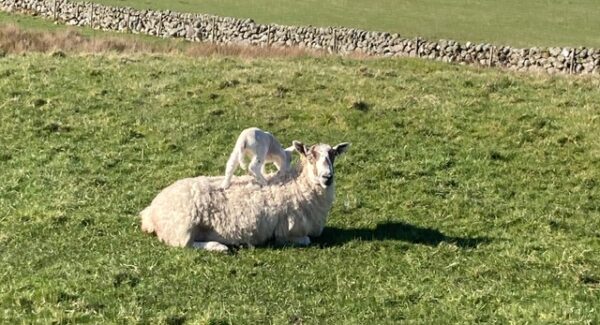
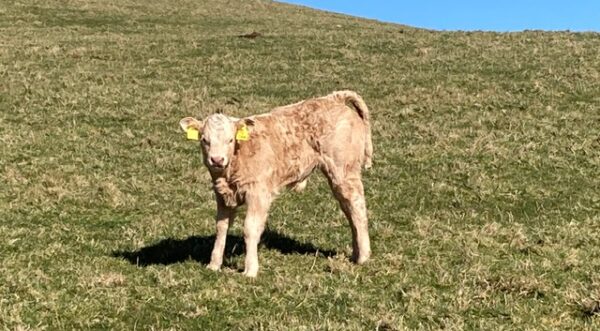
Along with our farmed animals we have wild deer roaming the hills, woodland, and fields. We have wetlands and boggy areas, which help provide feed and habitat for an abundance of wild birds, and wildlife for you to admire.
“You are sure to find many bees and butterflies amongst the wildflower areas on the coast and farm land hedgerows”
Wildflowers common to the area include: Thrift and Sea campion down by the sea, heathers and harebells on the hills, wood anemone and bluebells in the woodland (we have a specific hill known as Bluebell Hill). Whilst out exploring locally you may well find pink campion, wild garlic which you can smell and wild primrose growing in the lanes.
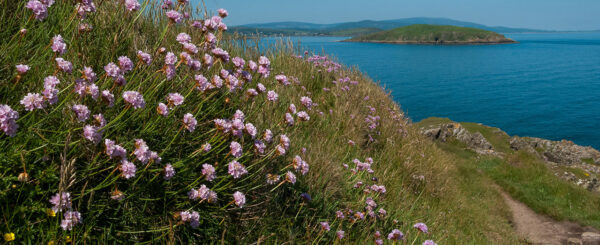
We purchase cattle feed and natural wheat, oat and barley straw to provide natural feed and bedding for our livestock. This is then composted and spread on our fields, mowing meadows as a natural fertiliser thus kinder to the environment, not as foul smelling as slurry. It also builds up the soil depth and quality, aiding soil sequestration. We are all about nature so we avoid the use of chemicals on our farm and don’t believe in commercial factory farming operations, So, you now know why our farm is so beautiful and well kept for all to experience and enjoy.
Most of our cattle are housed indoors in winter (even though they would prefer to be outside). Indoor housing saves damaging too much of the farmland over winter, so that there is a plentiful supply of grass for turnout in spring. From our winter housing, we are provided with a plentiful supply of organic manure, This is used extensively to fertilize the surrounding fields, depending the soil, aiding carbon sequestration, and improving the land naturally. All these measures help to develop our goal of sustainable farming.
We do use a small amount of inorganic fertiliser, known as bagged fertiliser, which gives the grass a boost to grow. We do not produce slurry here at Balcary, nor do we use pesticide sprays. In fact and interestingly, we had a problem with ragwort growing on some of our fields when the sheep were not grazing them. When the sheep graze the fields they graze away the ragwort which is poisonous to other animal species, namely horses, a ‘win win’.
We try to adopt a whole farm policy aiming to provide efficient and profitable production which is economically viable and environmentally responsible. We integrate beneficial natural processes into modern farming practices using the most appropriate technology. These aims are to minimise the environmental risks while conserving, enhancing and recreating that which is of environmental importance. We believe that farming and environment are inseparably linked.
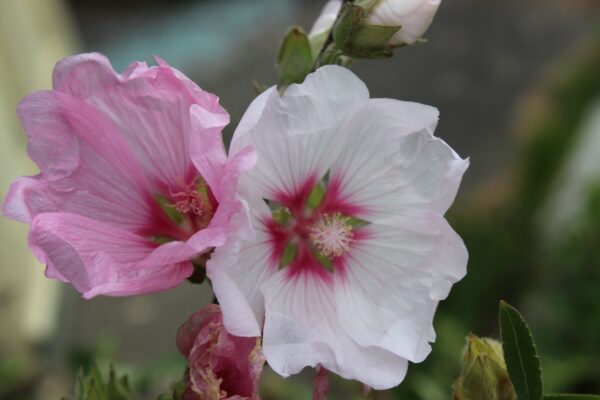
We aim to to protect and enhance the wildlife and landscape on the farm. This is achieved with hedges, ditches and woodland, as well as uncropped margins and environmental options such as wild bird seed mixture and nectar flower mixture. This is a huge area of land which would be lost to production, and hence affect our farm income. However, we are looking to improve areas of our land, for example the margins on the lane, and fenced coastal strips which are not in agricultural production but could be better utilised to provide wildlife habitat.
“We are trying create habitat and environmental improvement together”
Our hedgerows are important features on the farm as field boundaries, shelter areas for animals and a habitat for wildlife. We plan to plant more hedgerows here at Balcary, along with woodland as both are high carbon stock land. Hedges are not trimmed during the observed nesting period. We have some stonewalls here at Balcary too. These provide invaluable shelter, field boundaries and a habitat for wildlife, bugs and insects.
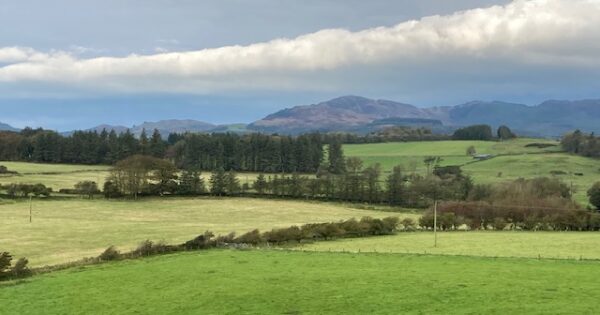
Ditch maintenance is not carried out during the bird nesting season. We recognise the need to manage ditch and watercourse edges in order to protect them from pollution, runoff or erosion resulting from overgrazing or inappropriate livestock access. Livestock must be managed in an appropriate way in order to protect wildlife and water quality. This is observed and considered here at Balcary by planning our stocking densities, and field grazing and management.
We have several different woodland areas on our farm, and we believe wherever possible, trees should be retained in order to maintain landscape character. Where older trees exist, we will consider new planting of trees as future replacements. We retain all hedgerow, boundary and infield trees unless they are a potential hazard.
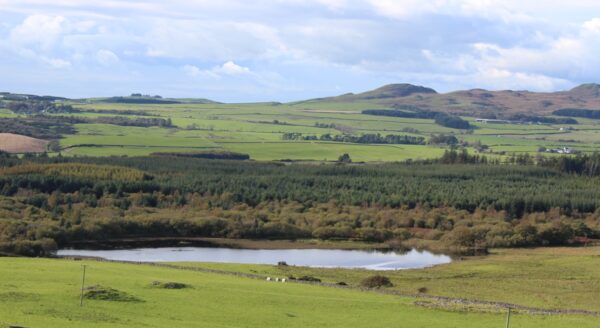
At Balcary, we have field margin management which benefits ground nesting birds and small mammals, as well as boosting numbers of beneficial predatory insects. We try to provide nesting, summer food and winter food habitats for farmland birds, or habitat for other native fauna as appropriate e.g. uncrossed headlands, allowing margins to regenerate naturally. We try to ensure that margins are not driven on or used for turning. We also try to avoid contamination of hedge bottoms, and watercourses which is relatively easy with solid organic farmyard manure as opposed to slurry!
We are cautious and aware not to damage or destroy nationally or locally important historic features. These include monuments, earthworks, sites of archaeological and historical interest by farming activities. This includes subsoiling, woodland clearance, tree-planting and any potential damage by livestock.
We hope that you can enjoy and appreciate our efforts.
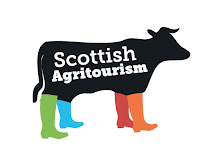

Ross Bay Retreat self catering holiday cottages in Dumfries & Galloway, a cosy, coastal retreat with sea views from each balcony; when you need to get away from it all.
Overdale Cottage is a cosy pet friendly cottage in the charming village of Harome, 3 miles from the Helmsley on the edge of the North York Moors National Park.